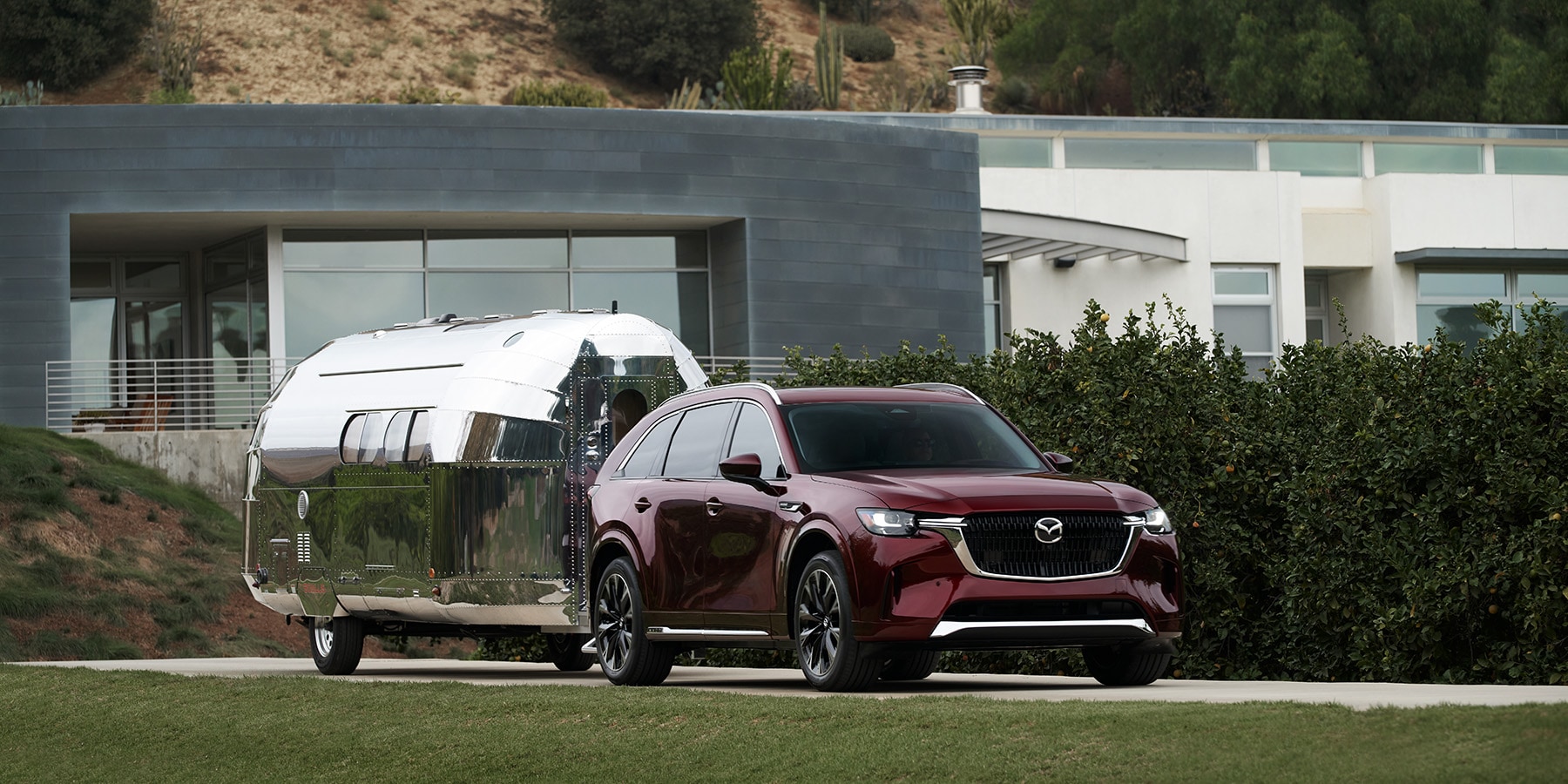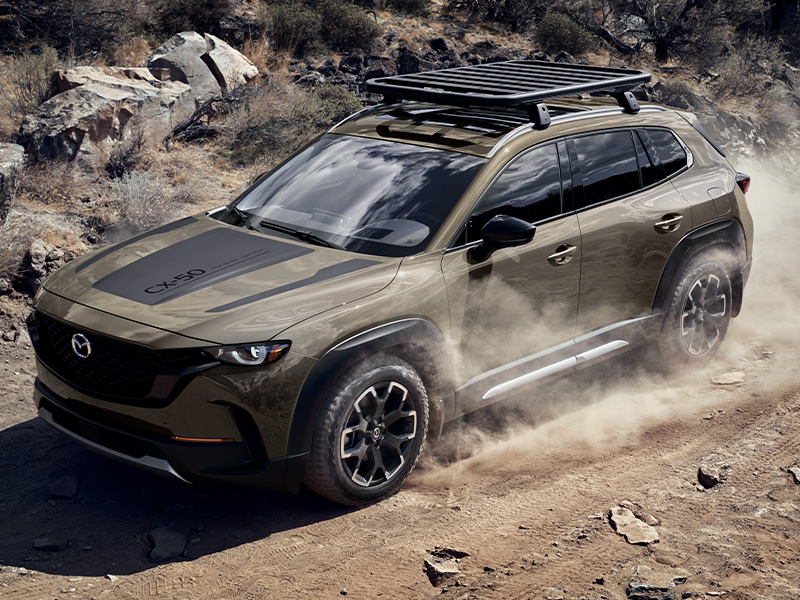Guide to Driving Modes

Drive modes are preset configurations that can affect many aspects of vehicle performance, including power delivery, stability, braking, fuel efficiency, steering response, and ride quality. When used correctly, they help adjust the way a vehicle performs in different road and weather conditions. In this guide, we will demystify drive modes, providing a comprehensive understanding of what they are, how they work, and how to make the most of these settings.
What are drive modes and how do they work?
Drive modes, also known as driving modes or vehicle dynamic modes, are manufacturer-developed settings within your vehicle that adjust various performance parameters to customize and optimize your driving experience. Drive modes have become a relatively standard feature in many modern vehicles — particularly SUVs and trucks — as vehicle technology has become more advanced.
The majority of modern automotive systems have electronic components, and drive modes optimize those components’ operation to specified conditions. In particular, electronic control units (ECUs) make drive modes possible. An ECU is “in charge” of many of your car’s key functions, such as the automatic transmission, suspension, dampers and airbags, steering, stability control, and braking. In general, these systems have a normal or standard default mode. When you select a specific drive mode, the car (essentially) changes to a different program, allowing the above systems to work best for the conditions of the chosen mode.
For example, if you choose a mode named Snow, it might limit your vehicle’s accelerator response to avoid “overwhelming” the tires’ ability to maintain traction, as well as allow a bit more tire spin during heavy throttle applications.
Not all vehicles have drive modes, and not all drive modes are available within vehicles that have them, so when you're choosing, say, an SUV for your family, you’ll want to explore the available drive modes to find the one that best suits your driving needs and preferences.
Common driving modes
1. Comfort drive mode
Sometimes called normal mode, comfort mode is designed to provide a smooth, relaxed, and comfortable ride. When activated, the vehicle's settings are adjusted to balance performance and fuel efficiency, and will often prioritize a softer suspension, smoother gear changes, and reduced engine responsiveness. This results in a gentler and more cushioned driving experience, ideal for long highway journeys and city commutes alike. Some vehicles offer both comfort and normal modes, in which case comfort is more biased for bad roads at lower speeds, while normal is best used for highway travel.
2. Eco drive mode
Eco mode prioritizes the fuel economy of the vehicle. This mode often shows drivers how their driving behavior affects their fuel consumption and uses displays to show the driver when they’re driving economically. Eco mode may also limit certain energy-consuming, non-safety related functions, like climate control and heated and massaging seats in your vehicle.
3. EV drive mode
Electric vehicle (EV) mode, is a feature designed to maximize the all-electric driving range in hybrid vehicles, particularly plug-in hybrids. This mode requires drivers to maintain light, smooth acceleration and often imposes a limited top speed and distance. It’s also particularly useful in stop-and-go traffic and when the gas engine is close to taking over for the electric motor.
In plug-in hybrids, the activation of EV mode “instructs” the vehicle to rely solely on its electric power source, bypassing any hybrid operations until the battery charge is depleted. If you have just a short trip to make and know you’ll be home before you need the gas engine, EV mode will run electric-only power unless you use heavy throttle, calling for power that the battery isn’t designed to provide that quickly.

4. Off-road drive mode
A vehicle may have one off-road mode, or it may have multiple versions, depending on how the manufacturer thinks most owners will use them. As such, off-road modes can vary significantly. These are some potential off-road drive mode capabilities:
- Minimization of accelerator pedal response at slow speed to maintain a better grip on rock or rough surfaces.
- Allowance of more tire spin at higher speeds to help maintain momentum in sand, silt, or mud.
- Change in brake feel due to allowance of more wheel lockup on loose surfaces.
- Hold the transmission in a lower gear for longer to maintain the smoothest application of power (driving on sand and mud requires a lot of power).
- Softening of suspension dampers at low speeds to allow maximum suspension flexibility and driving comfort.
- Stiffening of suspension dampers at high speed to counteract high-speed bumps.
Most vehicles designed for off-road travel have hill descent control, which controls low-speed downhill speed automatically (the switch is typically an image of a vehicle nose-down to the left, sometimes with a clock or gauge-like icon near it). Conversely, some vehicles have a system that automatically maintains very low speeds while climbing. Finally, vehicles with air suspension can change their ground clearance for more severe off-road travel; most will automatically lower at a certain speed for improved stability and aerodynamics.

5. Snow drive mode
Snow driving mode is specifically designed for inclement weather conditions, such as snow and ice, where maintaining traction and stability is paramount. This mode enhances your vehicle's grip on slippery surfaces by dulling throttle pedal response to reduce power application when the tires are already closer to their limit of adhesion. For example, in many vehicles, Snow mode will use second or third gear to get the car moving.
Additionally, the transmission may shift more gently and get into higher gears earlier than normal to make transitions between acceleration, cruising, and braking as smooth as possible when tire grip on the ground is tenuous.
That said, if you’re trying to get out of a snow drift and the traction control provided by Snow mode feels like it’s not helping, most cars allow you to turn it off; the extra wheel speed may help you get out. Just remember to turn it back on once you get going.
6. Sport/track drive mode
Sport, Sport+, or Track are three elevating levels of driving modes engineered to improve a vehicle's performance by — depending on the vehicle — enhancing the responsiveness of the steering, throttle, dampers, differential, traction and stability controls, exhaust, and/or transmission. These modes deliver a thrilling and aggressive driving experience, prioritizing maximum performance over fuel efficiency.
7. Custom drive mode
Custom mode allows drivers to save a unique combination of their preferred drive-mode settings. While it offers flexibility for individual driver preferences, certain limitations are in place to maintain safety and overall driving effectiveness. For example, in a car that offers these adjustments, you could set the vehicle's “powertrain” to Normal for a good blend of performance and efficiency, “steering” to Comfort in case the Sport mode makes the drive feel heavier, and “handling” to Dynamic for a crisp response.
What about 4WD modes?
While there are a variety of different driving modes available for most cars, they are different from four-wheel drive (4WD) controls like differential locks, crawl control, ride height, and two-to-four-wheel drive settings. Though they are sometimes used interchangeably, there’s a difference between the driving modes you might see in an AWD vs. 4WD vehicle.
4WD modes generally involve settings and controls that are designed for more rugged off-road conditions, providing additional traction and stability in challenging terrain. On the other hand, driving modes in an AWD system tend to focus on optimizing performance, efficiency, and handling for various on-road and weather conditions. Understanding these differences can help you make the most of your vehicle's capabilities in different driving situations.
Where do I locate and activate my vehicle’s drive modes?
The location and activation of your vehicle's drive modes can vary depending on the make and model of your car. Typically, you can find and activate your vehicle’s drive modes through a knob or buttons on the center console or dashboard, through the steering wheel, or via a drill-down menu on your vehicle’s menu. Some drive modes are identified by labels like "Drive Mode," while others use symbols like a snowflake or mountain peak for snow.
What drive mode should I drive in regularly?
Normal, sometimes labeled Comfort, is typically the ideal choice for daily driving.
What drive mode is best for highway driving?
If the highways in your area are bumpy driving at high speeds, Comfort mode can provide a smoother ride and easier steering. That said, at higher speeds, many people select Sport for the more stable feeling. You can always switch between modes to find what feels best to you.
Is it OK to change drive modes while driving?
Yes, it is generally okay to change drive modes while driving, but there are some important considerations to keep in mind to ensure your safety and the safety of others on the road. When changing drive modes, it’s typically best to do so while your vehicle is sitting still or at a steady cruising speed. Switching from one mode to another, especially in high-performance cars, can create significant changes in power delivery.
Is it OK to use Eco mode frequently?
Eco mode is a practical choice for anyone who tends to use the accelerator heavily (or in a less-than-smooth manner). Using Eco mode all the time will have no negative effect on your car.
Experience the Mazda Mi-Drive drive modes
The Mazda Mi-Drive is a dynamic driving mode system available in select Mazda vehicles, including the Mazda CX-5 and Mazda CX-50, that offers drivers the ability to customize their driving experience to suit their preferences and the conditions on the road. Depending on the vehicle and your car’s available accessories, drivers can have access to a Normal mode, Sport mode, Off-road mode, Towing mode, etc.
Elevate your journey and experience the Mazda unique blend of performance, efficiency, and control when you test-drive a Mazda at a dealer near you.
This article is intended for general informational purposes only and is based on the latest competitive information available at the time of posting. Information herein is subject to change without notice and without Mazda incurring any obligations. Please review a variety of resources prior to making a purchasing decision. Visit Resource Center for more articles.




















